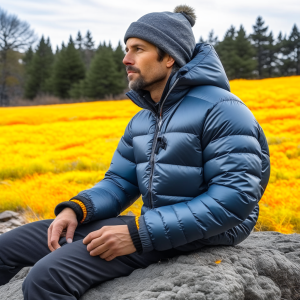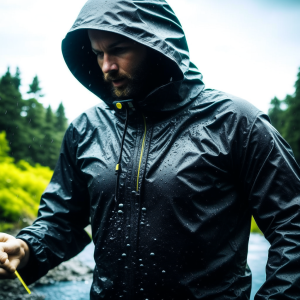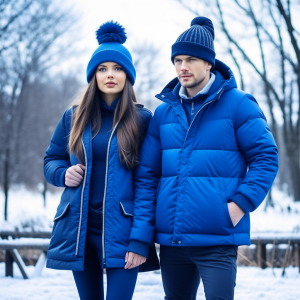Maximize Your Warmth and Style with Expert Layered Cold Weather Clothing Techniques
As the winter season approaches, bringing with it frigid temperatures and biting winds, the challenge of finding clothing that provides both warmth and style takes center stage. The key to staying cozy lies in mastering the art of layering your clothing. Have you ever considered the underlying principles of effective cold-weather clothing layering? In this detailed guide, we will explore the scientific concepts that differentiate high-performance winter garments from standard options, helping you stay warm without sacrificing your sense of style during the cold months.
Layering clothing transcends mere fashion; it is a strategic method to enhance heat retention and comfort amidst the harshest winter weather. When temperatures drop, our bodies respond by constricting blood vessels to preserve heat, often leading to uncomfortable cold extremities. This physiological response, while natural, requires reinforcement through well-planned layering techniques. By employing a thoughtful layering strategy, you can create a robust barrier against the cold while maintaining comfort and allowing for unrestricted movement, crucial for enjoying outdoor activities during winter.

Establishing Your Base Layer: The Essential Starting Point for Winter Warmth
The base layer is the critical first step in your winter wardrobe, designed to fit snugly against your skin while providing essential insulation. To appreciate the importance of this layer fully, we must delve into the science of moisture management and understand how it significantly influences your comfort and warmth during the chilly months ahead. Selecting the right materials for your base layer can be pivotal in ensuring that you stay warm and dry, setting the foundation for effective layering.
Utilizing Moisture-Wicking Fabrics for Superior Comfort
Choosing the right fabric for your base layer is vital for optimal moisture management. The role of moisture-wicking fabrics cannot be overstated, as they are engineered to draw moisture away from your skin, whether it originates from perspiration or external moisture. This crucial functionality prevents moisture buildup, which can lead to discomfort and chills. A premium base layer not only acts as a protective moisture barrier but also ensures that you remain dry and warm, even in the face of challenging weather conditions, significantly enhancing your overall thermal comfort.
Understanding Insulation: The Benefits of Merino Wool and Synthetic Fabrics
Now, let’s examine how materials such as merino wool and synthetic fibers enhance the insulating abilities of your base layer. Merino wool is renowned for its natural warmth, breathability, and moisture-wicking properties, making it an excellent choice for winter apparel. In contrast, synthetic materials like polyester and nylon provide an ideal mix of durability and insulation, creating a warm microclimate close to your skin that effectively traps body heat. This combination of properties keeps you comfortable and cozy, even in the harshest conditions outdoors.
Finding the Ideal Fit: Essential Tips for Base Layer Performance
When selecting your base layer, finding the right fit goes beyond just choosing your regular size; it is about maximizing performance. A snug-fitting base layer maintains consistent contact with your skin, boosting both its insulating and moisture-wicking effectiveness. However, balance is key—too tight can limit your movement and comfort, while too loose may hinder performance. Consider the type of activities you will be engaged in and your overall layering strategy to ensure seamless integration with your other winter clothing.
Ultimately, the base layer serves as more than just a basic clothing item; it functions as a sophisticated moisture-wicking and insulating shield against the harsh winter air. By understanding the unique properties of materials like merino wool and synthetic fibers, as well as mastering the fit, you can elevate your base layer into a fundamental component of your defense against the cold.
Mastering the Insulating Layer: Your Key to Optimal Body Heat Retention
 As we transition to discussing the insulating layer, we focus on its pivotal role in capturing and retaining heat around your body. This layer acts as a vital element in the science of heat retention, effectively functioning as a protective barrier against the harsh winter elements. Let’s explore critical factors such as warmth-to-weight ratios, the benefits of down insulation, and the eco-friendly advantages of synthetic alternatives to elevate your winter experience.
As we transition to discussing the insulating layer, we focus on its pivotal role in capturing and retaining heat around your body. This layer acts as a vital element in the science of heat retention, effectively functioning as a protective barrier against the harsh winter elements. Let’s explore critical factors such as warmth-to-weight ratios, the benefits of down insulation, and the eco-friendly advantages of synthetic alternatives to elevate your winter experience.
Understanding Warmth-to-Weight Ratios for Effective Insulation Choices
Grasping the concept of warmth-to-weight ratios is crucial when selecting an insulating layer. This principle emphasizes that insulation materials should deliver exceptional warmth without adding unnecessary bulk to your outfit. Essentially, it’s about maximizing warmth while minimizing weight, allowing for freedom of movement and comfort. This balance is especially important for those who seek effective insulation without feeling burdened, enabling you to engage in outdoor activities with ease during cold weather.
Down Insulation: Lightweight Warmth for Adventurous Souls
Down insulation is a premium choice for those seeking unparalleled warmth in a lightweight package. Sourced from the soft feathers of ducks and geese, down is celebrated for its extraordinary warmth-to-weight ratio. Its featherlight and compressible nature makes it a favorite among winter adventurers who require effective insulation without sacrificing mobility. Understanding the advantages of down insulation is essential for recognizing its role in creating an insulating layer that seamlessly combines warmth, comfort, and flexibility necessary for winter excursions.
Selecting Synthetic Insulation: Ethical Warmth for All Weather Conditions
Synthetic insulation materials, primarily derived from polyester fibers, have gained popularity as ethical alternatives in the insulation landscape. What sets synthetic insulation apart is its ability to retain heat even in wet conditions, an area where down may falter. This resilience in unpredictable weather makes synthetic fabrics ideal for various climates. Furthermore, choosing synthetic options aligns with ethical considerations, allowing you to enjoy warmth and comfort without compromising your personal values or environmental concerns.
Choosing the Right Thickness: Precision in Insulation Layer Selection
Determining the appropriate thickness for your insulating layer requires careful consideration and precision. Assess the expected level of cold exposure in conjunction with your layering strategy when making thickness decisions. In milder climates, a thinner insulating layer may be sufficient, while more extreme conditions might necessitate a thicker, more robust option. By understanding the nuances of insulation thickness, you can customize your insulating layer to meet the specific demands of your winter activities and personal comfort preferences.
Ultimately, the insulating layer transcends traditional clothing roles, evolving into a strategic ally in your battle against the cold. By deciphering the complexities of warmth-to-weight ratios, appreciating the benefits of down insulation alongside synthetic alternatives, and providing guidance on thickness selection, we transform the insulating layer into a calculated defense mechanism against winter’s icy grasp.
Your Outermost Layer: The Ultimate Barrier Against Severe Winter Conditions
The outermost layer is your essential shield against relentless winds and freezing temperatures. This layer serves dual functions: it protects against environmental elements and plays a significant role in moisture control. As we explore the outer layer further, we will uncover the importance of breathability, the transformative advantages of DWR finishes and Gore-Tex membranes, along with the critical windproof features that enhance overall insulation efficiency.
Breathability: The Key Element for Comfort and Moisture Management
Often underestimated, breathability is a fundamental feature of the outer layer that dramatically affects overall comfort. This characteristic pertains to the fabric’s ability to allow sweat vapor to escape from your body while preventing external moisture from infiltrating. Achieving this balance is crucial for keeping you dry and comfortable, thereby reducing the chilling effects of trapped moisture. A breathable outer layer is vital for maintaining a cozy microclimate within your clothing, ensuring exceptional comfort during adverse weather conditions.
DWR Finishes and Gore-Tex: The Pinnacle of Waterproofing Innovations
 DWR (Durable Water Repellent) coatings and Gore-Tex membranes are leaders in the realm of cold-weather outerwear. DWR finishes provide fabrics with water-repellent properties, creating an effective barrier against rain, sleet, and snow. Gore-Tex and similar technologies elevate waterproofing to new heights, offering a perfect blend of impermeability and breathability. Understanding the interplay between these technologies is crucial for staying dry and comfortable, even in the most severe weather conditions.
DWR (Durable Water Repellent) coatings and Gore-Tex membranes are leaders in the realm of cold-weather outerwear. DWR finishes provide fabrics with water-repellent properties, creating an effective barrier against rain, sleet, and snow. Gore-Tex and similar technologies elevate waterproofing to new heights, offering a perfect blend of impermeability and breathability. Understanding the interplay between these technologies is crucial for staying dry and comfortable, even in the most severe weather conditions.
Windproof Features: Fortifying Your Defense Against Cold Winds
Windproof characteristics are essential in frigid conditions, particularly when sharp gusts can penetrate even the strongest fabrics. The windproof outer layer acts as an impenetrable barrier against cold air, enhancing comfort while protecting the insulation of the inner layers. By blocking icy winds, your outer layer becomes a formidable protector, ensuring that your carefully selected layers function together to keep you warm and shielded from harsh elements.
In essence, the outermost layer is more than just a protective shell; it is a sophisticated barrier that masterfully balances breathability and waterproofing. By understanding the significance of breathability, exploring the innovations of DWR finishes and Gore-Tex membranes, and recognizing the essential role of windproof features, we elevate the outer layer into a versatile garment that excels in style, functionality, and weather resistance.
Actionable Strategies to Achieve Ultimate Warmth and Style This Winter
With a comprehensive understanding of effective layering techniques established, let’s explore practical tips and strategies to enhance your cold-weather experience, seamlessly merging warmth with enduring style. Accessories are crucial components of winter attire, often functioning as unsung heroes that can elevate your wardrobe. From the vital warmth provided by well-chosen gloves to the stylish flair of a cozy hat and the comfort of thermal socks, these seemingly minor details are instrumental in crafting a fashionable yet functional winter ensemble.
The Essential Importance of Accessories: More Than Just Aesthetic Appeal
Accessories serve a purpose far beyond mere decoration; they are fundamental elements of your defense against the cold. Beyond their visual charm, items such as gloves, hats, and thermal socks are crucial in enhancing your overall warmth. By thoughtfully incorporating these accessories, you ensure that every part of your body is shielded from the chill, effectively preventing valuable body heat from escaping into the frigid air. A well-rounded winter outfit requires the right accessories to maintain comfort and style.
Investing in Quality Accessories: Recommendations for Optimal Comfort
The pursuit of warmth extends beyond the base and insulating layers; it also encompasses the careful selection of accessories. Invest in high-quality gloves crafted from insulating materials such as fleece or lined leather to create a robust barrier against the cold. A warm hat with additional insulation or a cozy faux-fur lining not only enhances your look but also aids in heat retention. Opt for thermal socks made from merino wool or advanced synthetic blends to guarantee maximum warmth and effective moisture management, ensuring your extremities remain comfortable.
Fashion-Forward Tips: Merging Functionality with Style
Remaining warm during freezing temperatures doesn’t have to compromise your style. Employ clever styling techniques to navigate the winter landscape with grace and confidence. Experiment with layering various textures in your outfit to create visual intrigue while simultaneously boosting insulation. Select winter-appropriate colors that harmonize with the snowy environment, and don’t shy away from accessorizing with bold pieces like a vibrant scarf or chic earmuffs to elevate your overall look and express your personality.
In summary, accessories are the understated architects of a well-rounded winter outfit. They not only enhance warmth but also allow you to express your unique style, even in the coldest conditions. By selecting high-quality accessories and thoughtfully styling your winter wardrobe, you can master the chill while showcasing undeniable elegance.
Embrace the Perfect Blend of Style and Functionality in Your Winter Wardrobe
As we conclude our exploration into conquering the cold, it’s crucial to appreciate the significance of style in winter clothing. Dressing for the cold does not require you to sacrifice your fashion sense; instead, the modern fashion landscape celebrates the integration of functionality and flair. Numerous outdoor and fashion brands have recognized the demand for winter gear that not only keeps you warm but also radiates confidence and contemporary elegance.
The Evolution of Cold-Weather Clothing: A Stylish New Era
 The cold-weather clothing industry is experiencing a renaissance, where winter gear transcends functional necessity to become a symbol of innovation and style. Designers and brands increasingly recognize the importance of clothing that seamlessly blends practicality with aesthetic appeal. This transformation has ushered in a new era of outerwear that not only provides warmth but also captivates with its visual allure and design sophistication.
The cold-weather clothing industry is experiencing a renaissance, where winter gear transcends functional necessity to become a symbol of innovation and style. Designers and brands increasingly recognize the importance of clothing that seamlessly blends practicality with aesthetic appeal. This transformation has ushered in a new era of outerwear that not only provides warmth but also captivates with its visual allure and design sophistication.
Leading Brands: Harmonizing Style and Functionality
Several brands are at the forefront of this style revolution, skillfully merging fashion and functionality in their winter apparel. Canada Goose is celebrated for its luxurious down coats that deliver remarkable warmth without compromising on style. The North Face integrates cutting-edge technology into its designs, creating outerwear that balances chic aesthetics with practical functionality. Meanwhile, Moncler has redefined the puffer jacket, transforming it into a high-fashion statement piece, demonstrating that winter clothing can be both practical and runway-ready.
Effective Styling: Elevate Your Winter Fashion Experience
Now, let’s look at how to effectively merge warmth and style in your winter outfits. Choose standout pieces that fulfill both functional and aesthetic roles, such as a beautifully tailored wool coat or a sleek parka that acts as the centerpiece of your ensemble. Experiment with layering a chunky knit sweater over a fitted jacket for a cozy yet stylish appearance. Don’t hesitate to introduce vibrant colors into your winter look by accessorizing with eye-catching scarves or trendy boots that reflect your personal style.
Ultimately, embracing style in the cold is no longer a contradiction; it’s a vibrant reality shaped by a dynamic fashion industry. As fashionable cold-weather gear emerges, adorned by innovative brands, the narrative shifts from mere survival to personal expression. So, immerse yourself in this style renaissance, choose pieces that empower you, and redefine fashion amid the wintry embrace of the season.
The post Cold Weather Clothing Layers: The Science Explained appeared first on Survival Bite.
The Article Cold Weather Clothing Layers Explained: Understanding the Science Was Found On https://limitsofstrategy.com


No responses yet